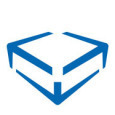KBox Patch detection causes high CPU usage
The KACE tech support group recommended posting this here for feedback from KBox users.
Does anyone else use a KBox to deploy patches and also have McAfee Total Protection for Small Business (a.k.a. Sonicwall Network Antivirus)?
Whenever a patch detection is run on our clients, the CPU usage climbs to 100% on single-core systems, and about 25% on quad-core systems, for the duration of the detection. Single-core systems will bog down so much they are unusable during the detection process.
I tried adding the KACE agent program directory to the exclusion list, but it hasn't made a difference thus far. I have tested disabling all the extra features (heuristic scanning and such), to no avail.
Has anyone else experienced this and figured out a solution or work around?
Thanks,
djz
Answers (10)
I'm resurrecting an old post, any development with this problem? Here's my findings.
Test environment:
Windows XP SP3 32bits with
- McAfee VirusScan Enterprise + AntiSpyware Enterprise 8.8.0.777
Scan engine version (32 bits): 5400.1158
- McAfee SiteAdvisor Enterprise Plus 3.0.0.638
- System Compliance Profiler 2.0.0.189
- McAfee Agent 4.6.0.2292
During detecting phase, it's svchost.exe process that's taking high CPU usage. It's often reaching 100% usage on single core system, 50% on dual core, 25% on quad core and so on. Maybe it's just programmed to take all % CPU usage available when it should be better if they set a cap around 75%.
I found something interesting...the svchost.exe timeframe is around 45sec and then after that it's mcshield.exe for about 30sec (sometimes it could be long as svchost.exe at 45sec). I saw this problem on both single core and dual core system using McAfee VirusScan Enterprise + AntiSpyware Enterprise 8.8.0.777.
After updating the AV to 8.8.0.849, the problem was gone on dual core system but still present on single core system.
So I opened a ticket on KACE support to see if they could provide me an AV exclusion list. It could help.
Note that, so far, only older systems are completely unusable during the detection process. Perhaps there is a minimum system requirement for the KBox Agent?
System Requirements for KBOX Agents
System requirements to install the KBOX Agent are:
Windows:
- Vista (32-bit and 64-bit)
- Windows 2003 (32-bit and 64-bit)
- Windows XP (32-bit and 64-bit)
- Windows 2000 (32-bit)
- Microsoft Windows Server 2008 (32-bit and 64-bit)
All Windows platforms require Microsoft Internet Explorer 5.01 or greater and Microsoft .NET Framework
1.1/2.0, 90 MHz or faster processor, and 128 MB RAM & 10MB free disk space (minimum).
Microsoft Windows KBOX agents of version 3.0 or later will work with .NET Framework 2.0.
Linux:
- Red Hat Enterprise Linux (RHEL) 3, 4, and 5 (32-bit)
Macintosh®:
- Mac OS X v10.6 Intel and PowerPC (aka Snow Leopard; your KBOX 1000 Series appliance supports the pre-release version and will support the final version when it ships).
- Mac OS X 10.5 Intel and PowerPC
- Mac OS X 10.4 Intel and PowerPC
Installation Guide which only mentions that, for Windows XP, the system should have at least 512 MB of RAM, with 1 GB recommended. The system that had the worst trouble has 1 GB of RAM and a 2.4 Ghz P4 processor.
If anyone else is running McAfee and using the KBox for patch detection, please post a message here.
It only becomes unusable when both the real-time scanning (mcshield.exe) and the patch detection are both on.
For right now I'm planning on working around the issue by running the patch detection early in the morning, after the system is automatically booted and before the users are expected to arrive.
 Rating comments in this legacy AppDeploy message board thread won't reorder them,
Rating comments in this legacy AppDeploy message board thread won't reorder them,so that the conversation will remain readable.



